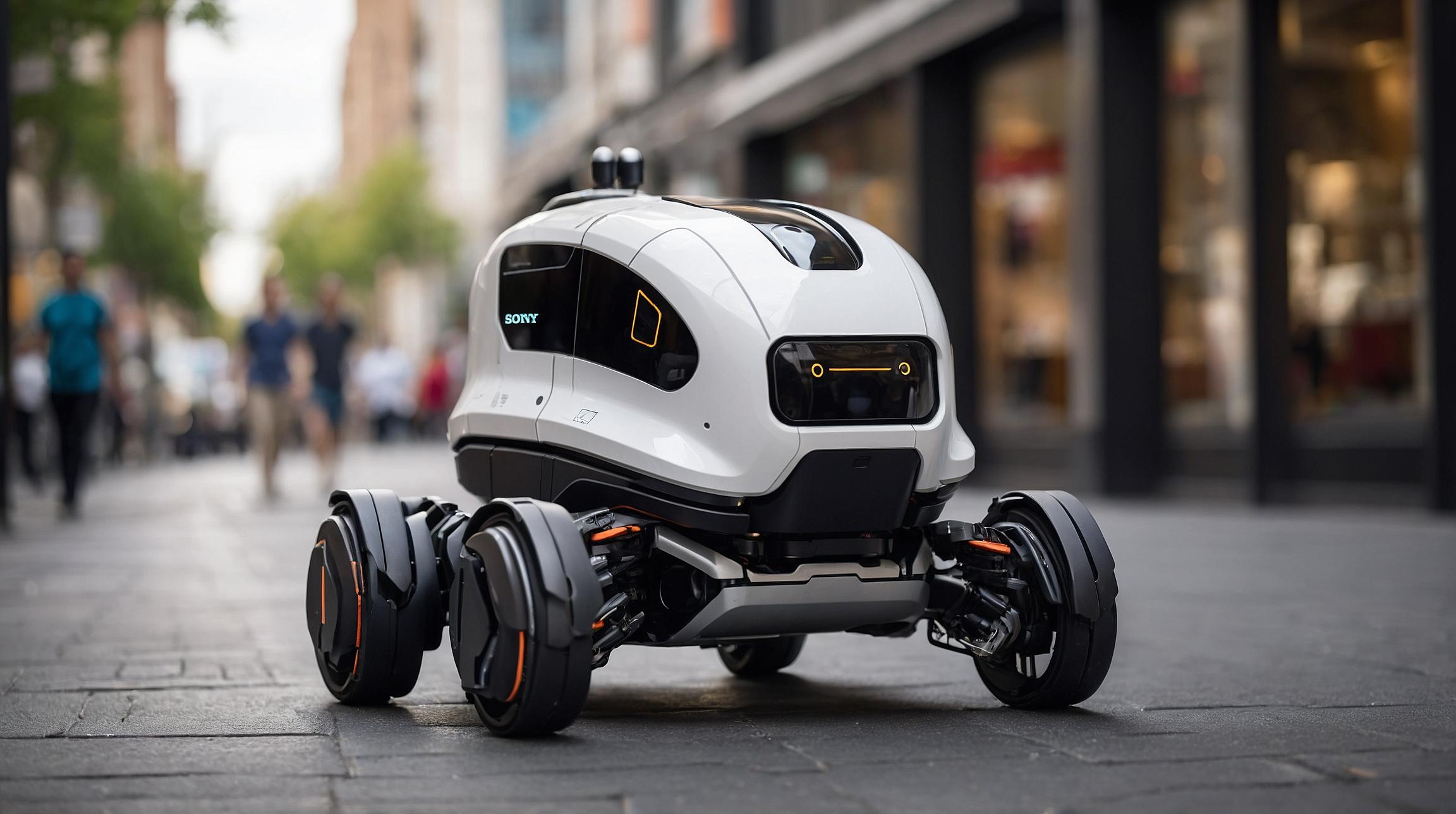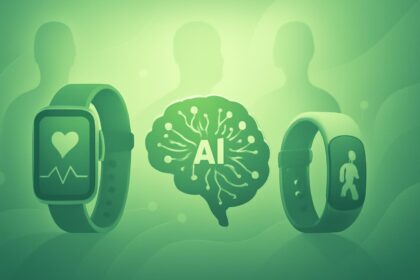The collaboration between OpenAI and Jony Ive represents a bold step toward redefining AI hardware interfaces. However, the complexity of creating a screenless, context-aware device introduces multiple development risks that could impact timelines and market adoption. !-- wp:paragraph -->
- Opportunities: Potential to pioneer a new category of ambient AI devices with seamless user interaction.
- Risks: Technical hurdles in privacy, personality design, and hardware miniaturization may delay market entry.
- Market Impact: Success could position OpenAI as a leader in AI hardware innovation, but setbacks may benefit competitors.
- User Adoption: Acceptance depends on resolving privacy concerns and ensuring intuitive, non-intrusive UX.
“Creating a device that is always attentive yet unobtrusive is proving more complex than anticipated,” a source told the Financial Times.
FinOracleAI — Market View
The collaboration between OpenAI and Jony Ive represents a bold step toward redefining AI hardware interfaces. However, the complexity of creating a screenless, context-aware device introduces multiple development risks that could impact timelines and market adoption. !-- wp:paragraph -->- Opportunities: Potential to pioneer a new category of ambient AI devices with seamless user interaction.
- Risks: Technical hurdles in privacy, personality design, and hardware miniaturization may delay market entry.
- Market Impact: Success could position OpenAI as a leader in AI hardware innovation, but setbacks may benefit competitors.
- User Adoption: Acceptance depends on resolving privacy concerns and ensuring intuitive, non-intrusive UX.
Potential Delays to Initial Launch
The unresolved challenges around user experience, privacy, and hardware capabilities indicate that the original 2026 launch schedule may face delays. OpenAI and Ive’s teams are reportedly working to refine the device’s core functionalities to meet high user expectations. !-- wp:paragraph -->“Creating a device that is always attentive yet unobtrusive is proving more complex than anticipated,” a source told the Financial Times.
FinOracleAI — Market View
The collaboration between OpenAI and Jony Ive represents a bold step toward redefining AI hardware interfaces. However, the complexity of creating a screenless, context-aware device introduces multiple development risks that could impact timelines and market adoption. !-- wp:paragraph -->- Opportunities: Potential to pioneer a new category of ambient AI devices with seamless user interaction.
- Risks: Technical hurdles in privacy, personality design, and hardware miniaturization may delay market entry.
- Market Impact: Success could position OpenAI as a leader in AI hardware innovation, but setbacks may benefit competitors.
- User Adoption: Acceptance depends on resolving privacy concerns and ensuring intuitive, non-intrusive UX.
Key Technical Obstacles
- Personality and Interaction: Defining the device’s conversational personality to ensure natural yet appropriate responses remains unresolved.
- Privacy Management: Balancing an “always on” listening mode with stringent privacy safeguards is a critical concern.
- Computing Infrastructure: Ensuring robust and efficient processing capabilities within a compact form factor poses engineering difficulties.
- Response Timing: The device must accurately determine when to engage or conclude interactions to avoid intrusive behavior.
Potential Delays to Initial Launch
The unresolved challenges around user experience, privacy, and hardware capabilities indicate that the original 2026 launch schedule may face delays. OpenAI and Ive’s teams are reportedly working to refine the device’s core functionalities to meet high user expectations. !-- wp:paragraph -->“Creating a device that is always attentive yet unobtrusive is proving more complex than anticipated,” a source told the Financial Times.
FinOracleAI — Market View
The collaboration between OpenAI and Jony Ive represents a bold step toward redefining AI hardware interfaces. However, the complexity of creating a screenless, context-aware device introduces multiple development risks that could impact timelines and market adoption. !-- wp:paragraph -->- Opportunities: Potential to pioneer a new category of ambient AI devices with seamless user interaction.
- Risks: Technical hurdles in privacy, personality design, and hardware miniaturization may delay market entry.
- Market Impact: Success could position OpenAI as a leader in AI hardware innovation, but setbacks may benefit competitors.
- User Adoption: Acceptance depends on resolving privacy concerns and ensuring intuitive, non-intrusive UX.
Conceptualizing a Screenless, Palm-Sized AI Companion
According to the Financial Times, the joint OpenAI-Ive initiative targets a compact, palm-sized device that operates without a screen. This device is designed to interpret both audio and visual inputs from its surroundings and respond naturally to user requests. The concept challenges conventional interface paradigms by prioritizing ambient interaction. !-- wp:paragraph -->Key Technical Obstacles
- Personality and Interaction: Defining the device’s conversational personality to ensure natural yet appropriate responses remains unresolved.
- Privacy Management: Balancing an “always on” listening mode with stringent privacy safeguards is a critical concern.
- Computing Infrastructure: Ensuring robust and efficient processing capabilities within a compact form factor poses engineering difficulties.
- Response Timing: The device must accurately determine when to engage or conclude interactions to avoid intrusive behavior.
Potential Delays to Initial Launch
The unresolved challenges around user experience, privacy, and hardware capabilities indicate that the original 2026 launch schedule may face delays. OpenAI and Ive’s teams are reportedly working to refine the device’s core functionalities to meet high user expectations. !-- wp:paragraph -->“Creating a device that is always attentive yet unobtrusive is proving more complex than anticipated,” a source told the Financial Times.
FinOracleAI — Market View
The collaboration between OpenAI and Jony Ive represents a bold step toward redefining AI hardware interfaces. However, the complexity of creating a screenless, context-aware device introduces multiple development risks that could impact timelines and market adoption. !-- wp:paragraph -->- Opportunities: Potential to pioneer a new category of ambient AI devices with seamless user interaction.
- Risks: Technical hurdles in privacy, personality design, and hardware miniaturization may delay market entry.
- Market Impact: Success could position OpenAI as a leader in AI hardware innovation, but setbacks may benefit competitors.
- User Adoption: Acceptance depends on resolving privacy concerns and ensuring intuitive, non-intrusive UX.
Strategic Acquisition and Vision
In May 2025, OpenAI announced its acquisition of io, the device startup founded by Jony Ive and OpenAI CEO Sam Altman, for $6.5 billion. The partnership was positioned to pioneer a new category of AI-powered computers, with initial device launches anticipated in 2026. Bloomberg reported early expectations for the hardware to debut within that timeframe. !-- wp:paragraph -->Conceptualizing a Screenless, Palm-Sized AI Companion
According to the Financial Times, the joint OpenAI-Ive initiative targets a compact, palm-sized device that operates without a screen. This device is designed to interpret both audio and visual inputs from its surroundings and respond naturally to user requests. The concept challenges conventional interface paradigms by prioritizing ambient interaction. !-- wp:paragraph -->Key Technical Obstacles
- Personality and Interaction: Defining the device’s conversational personality to ensure natural yet appropriate responses remains unresolved.
- Privacy Management: Balancing an “always on” listening mode with stringent privacy safeguards is a critical concern.
- Computing Infrastructure: Ensuring robust and efficient processing capabilities within a compact form factor poses engineering difficulties.
- Response Timing: The device must accurately determine when to engage or conclude interactions to avoid intrusive behavior.
Potential Delays to Initial Launch
The unresolved challenges around user experience, privacy, and hardware capabilities indicate that the original 2026 launch schedule may face delays. OpenAI and Ive’s teams are reportedly working to refine the device’s core functionalities to meet high user expectations. !-- wp:paragraph -->“Creating a device that is always attentive yet unobtrusive is proving more complex than anticipated,” a source told the Financial Times.
FinOracleAI — Market View
The collaboration between OpenAI and Jony Ive represents a bold step toward redefining AI hardware interfaces. However, the complexity of creating a screenless, context-aware device introduces multiple development risks that could impact timelines and market adoption. !-- wp:paragraph -->- Opportunities: Potential to pioneer a new category of ambient AI devices with seamless user interaction.
- Risks: Technical hurdles in privacy, personality design, and hardware miniaturization may delay market entry.
- Market Impact: Success could position OpenAI as a leader in AI hardware innovation, but setbacks may benefit competitors.
- User Adoption: Acceptance depends on resolving privacy concerns and ensuring intuitive, non-intrusive UX.
OpenAI and Jony Ive Tackle Complexities in Next-Gen AI Device
OpenAI, in collaboration with renowned designer Jony Ive, is encountering significant technical and design challenges in the development of a pioneering screenless AI device. This innovation aims to redefine user interaction with AI by eliminating traditional display interfaces and leveraging environmental audio and visual cues. !-- wp:paragraph -->Strategic Acquisition and Vision
In May 2025, OpenAI announced its acquisition of io, the device startup founded by Jony Ive and OpenAI CEO Sam Altman, for $6.5 billion. The partnership was positioned to pioneer a new category of AI-powered computers, with initial device launches anticipated in 2026. Bloomberg reported early expectations for the hardware to debut within that timeframe. !-- wp:paragraph -->Conceptualizing a Screenless, Palm-Sized AI Companion
According to the Financial Times, the joint OpenAI-Ive initiative targets a compact, palm-sized device that operates without a screen. This device is designed to interpret both audio and visual inputs from its surroundings and respond naturally to user requests. The concept challenges conventional interface paradigms by prioritizing ambient interaction. !-- wp:paragraph -->Key Technical Obstacles
- Personality and Interaction: Defining the device’s conversational personality to ensure natural yet appropriate responses remains unresolved.
- Privacy Management: Balancing an “always on” listening mode with stringent privacy safeguards is a critical concern.
- Computing Infrastructure: Ensuring robust and efficient processing capabilities within a compact form factor poses engineering difficulties.
- Response Timing: The device must accurately determine when to engage or conclude interactions to avoid intrusive behavior.
Potential Delays to Initial Launch
The unresolved challenges around user experience, privacy, and hardware capabilities indicate that the original 2026 launch schedule may face delays. OpenAI and Ive’s teams are reportedly working to refine the device’s core functionalities to meet high user expectations. !-- wp:paragraph -->“Creating a device that is always attentive yet unobtrusive is proving more complex than anticipated,” a source told the Financial Times.
FinOracleAI — Market View
The collaboration between OpenAI and Jony Ive represents a bold step toward redefining AI hardware interfaces. However, the complexity of creating a screenless, context-aware device introduces multiple development risks that could impact timelines and market adoption. !-- wp:paragraph -->- Opportunities: Potential to pioneer a new category of ambient AI devices with seamless user interaction.
- Risks: Technical hurdles in privacy, personality design, and hardware miniaturization may delay market entry.
- Market Impact: Success could position OpenAI as a leader in AI hardware innovation, but setbacks may benefit competitors.
- User Adoption: Acceptance depends on resolving privacy concerns and ensuring intuitive, non-intrusive UX.













